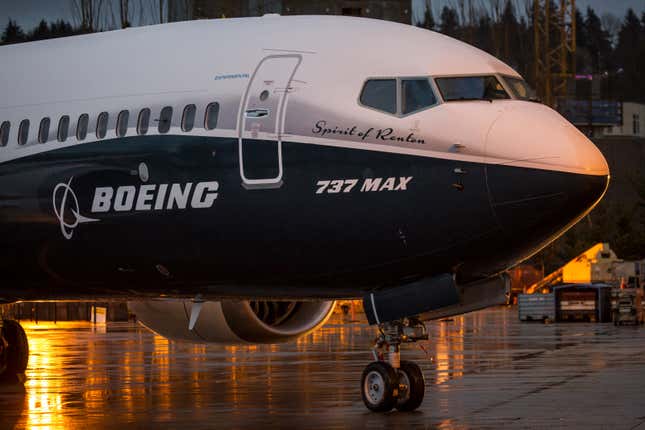
If you’re getting ready to fly anywhere in the coming weeks, you may be a bit nervous over wondering if the plane you’re boarding is safe. Seeing 737 on the side of a fuselage can be enough to give even the most stalwart traveler with a hefty pile of frequent flier miles pause. Luckily, there’s now a website with one simple purpose: to tell you if your flight is in one of these seemingly cursed aircrafts.
IsMyPlaneA737Max.com exists simply to answer the burning question at the back of nearly every passenger’s mind. Created by iOS engineer Jackson Cheek, all you have to do is enter your flight number to find out if you’re flying on a 737 Max or not. From there, you choose what to do with that information, whether it’s rebook the flight, make a will or merely prepare yourself to test the shaky hand of fate.
Now, it’s important to note that, as of Tuesday, the Federal Aviation Administration grounded every 737 Max with door plugs (the part that failed on the Alaska Airline flight 1282 last week, leading to decompression in the cabin) but faulty door plugs haven’t been the only problem with the 737. In 2018 and 2019, two Boeing 737 Max airplanes crashed within six months of each other, killing 346 people. The cause in those crashes was narrowed down to another small, faulty part: the angle of attack sensor which caused the planes to stall during ascent. The 737s were quickly taken out of service following the second crash, only to come back online in 2021 following a suite of updates.
The current failure is being blamed on a parts supplier, which has been accused of ignoring faulty parts for years. But in the 2018 and 2019 crashes, a congressional report found a general culture of concealment at Boeing didn’t help the situation. While no one died in the Alaska Airlines incident, losing a door like that mid-flight like this can indeed kill; a similar decompression event killed nine people after they were sucked out of a United Airlines flight in 1989.
At this point, no matter how many assurances from the FAA or Boeing or the Department of Transportation, the 737 might have its reputation in irretrievable shambles. A plane is made up of a million tiny parts that all need to work perfectly for the modern miracle of jet flight to work, and this plane has had two separate parts fail under different circumstances. Fliers have every right to wonder what the next part to fail might be, and avoid such aircrafts at all costs.







